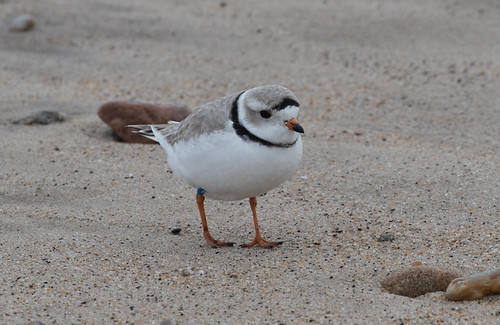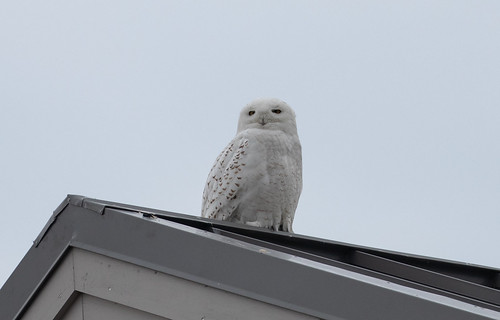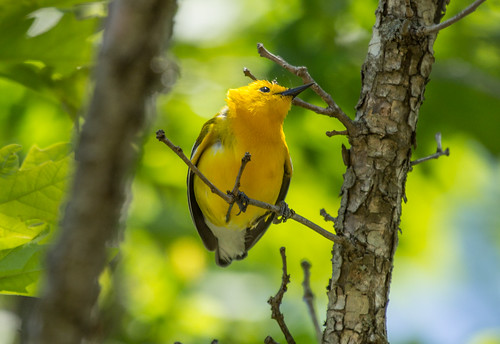I've never had the slightest inclination to be a hunter myself, but from the very start of my birding life, much of the training that shaped my sensibilities was from hunters. And one of the most important things I learned was that I must buy a federal Duck Stamp every year.
 |
| The first Federal Duck Stamp, issued in 1934. |
Duck Stamps are the primary source of revenue for habitat acquisition for the National Wildlife Refuge system, and I had so many memorable experiences at wildlife refuges and wildlife management areas since I started birding that I've been committed to supporting them. And the Duck Stamps were so pretty! The artwork is selected each year via a major contest. Usually it’s a closeup of one or a pair of ducks in the water or a lovely closeup of ducks winging through the sky, but competition in the Duck Stamp contest is so keen that every year’s winner is simply gorgeous.
Waterfowl hunters are legally required to get a federal Duck Stamp annually. To use it for hunting you’re expected to sign your name on it. Because they’re so beautiful, a great many hunters buy two—one to serve as their federal hunting license and one to keep. Many non-hunters buy them, too—both collectors and people like me, who understand their importance for funding habitat acquisition. The Duck Stamp also serves as free admission to National Wildlife Refuges. Again, you’re supposed to sign yours to use it like this, but because the Stamp revenues go toward new habitat acquisition, not regular operating expenses, and because I like to support the refuges I visit, I always pay admission even when my Duck Stamp is in my wallet.
Back during the Bush era, more and more of the money from Duck Stamps stopped going toward outright buying of habitat, as wealthy landowners pressured the government to lease their lands and more and more politicians wanted to reduce government and cut back government land ownership. This gave the landowners lots of money each year with the option to stop leasing in the future if they found a more lucrative way of developing the land, which ironically was precisely what the National Wildlife Refuge system had been set up to avoid—the program was originally focused on the long-term well-being of wildlife, not a means for short-term profits for landowners. But habitat is habitat, and I hoped that eventually people would start looking more to the future again, and so I kept buying my annual Duck Stamp. Duck hunters of course kept buying them, collectors bought them, and lots of other birders and wildlife photographers did as well. It’s a system that has worked since Roosevelt signed the Migratory Bird Hunting Stamp Act, or the Duck Stamp Act, in 1934. It was always a system most focused on duck hunters, and it’s always been a system that welcomes everyone else who loves wildlife, too.
My brother was a duck hunter and I have many duck hunting friends. They often have duck art on their walls—the vast majority being of beautiful scenes with wild ducks swimming or flying. Occasionally they display artwork with a retriever, sometimes carrying a dead duck, but the vast majority of artwork I’ve seen hunters display is of wild habitat and wild, living ducks. My brother had a male and female of each duck species he'd hunted stuffed by a taxidermist, every one of them in a life-like pose. Clearly, living ducks in natural settings are appealing to duck hunters and non-hunters.
In 2018, the Duck Stamp art contest had the theme “celebrating our waterfowl hunting heritage.” To accomplish this, the 2018 contest regulations required the mandatory inclusion of “appropriate hunting-related accessories and/or scenes.” The stamp that won depicted a Wood Duck with a decoy. That was a fine way to remind us all that the Duck Stamp is required by all hunters, who thus provide important habitat funding.
These limits will decrease rather than expand sales of the Duck Stamp, which have already been declining from the high of 2.4 million in 1970-71 to 1.5 million in 2017-18, as the number of hunters has declined. The beautiful wild ducks in natural scenes that appeal to non-hunters are just as appealing to hunters. At this critical time, as the numbers of hunters dwindle, we need to broaden the support of the Duck Stamp to include even more birders, photographers, and other non-consumptive citizens who value land protection. The hunters I’ve talked to agree. This pending proposal is a step backward and should not be implemented.
 |
| Gambel's Quail at Bosque del Apache National Wildlife Refuge in New Mexico |
The comment period for this proposed rule ends March 16, so we don't have much time, but please let the U.S. Fish and Wildlife Service know that it's important to remember how conservation is the whole point of the Duck Stamp, even embedded in its official name: the "Federal Migratory Bird Hunting and Conservation Stamp."
 |
| Federal Duck Stamp issued 2018. |
Please submit a comment stating that you oppose this new regulation, not because you're against hunting but because the Duck Stamp should keep its focus on waterfowl conservation and habitat to encourage as many people as possible to buy Duck Stamps each year. Go to the Federal Register's website "Revision of Federal Migratory Bird Hunting and Conservation Stamp (Duck Stamp) Contest Regulations" and click on the green button near the top "Submit a Formal Comment" by Monday, March 16. Your comment doesn't need to be long or eloquent. Just say no.







